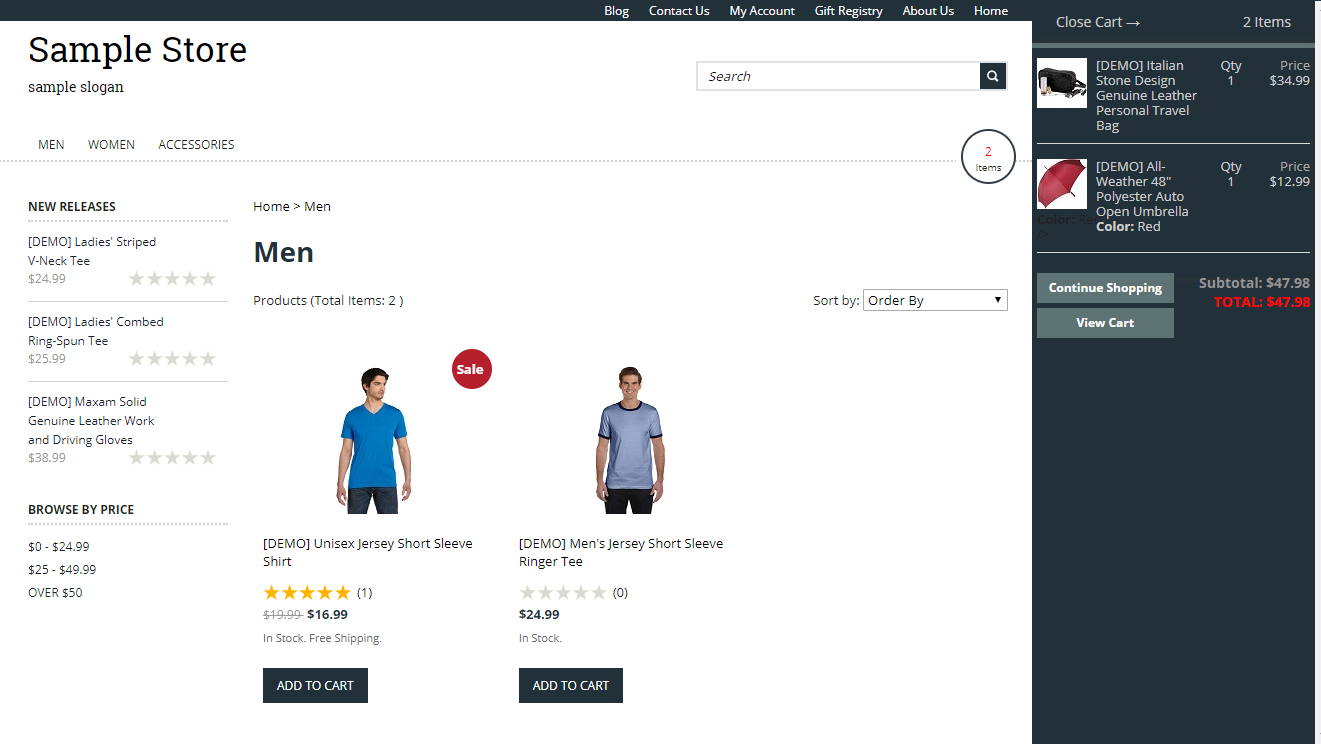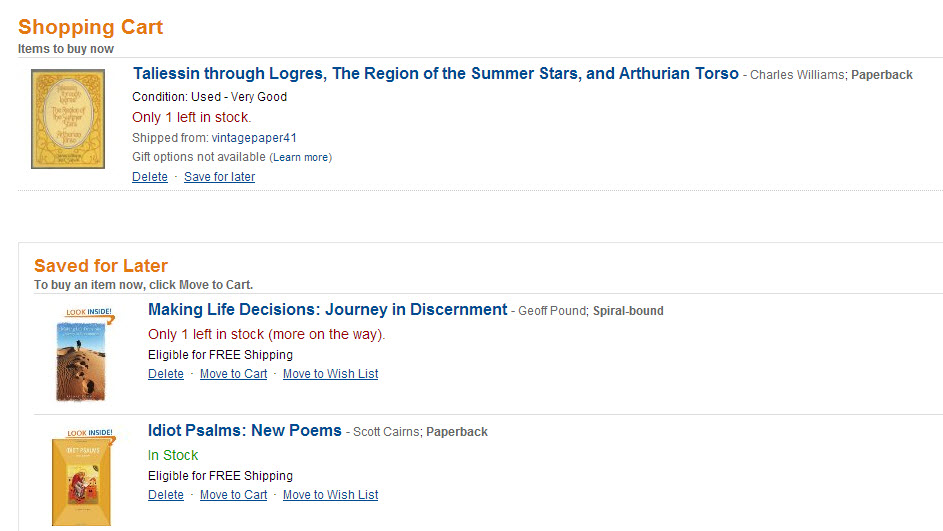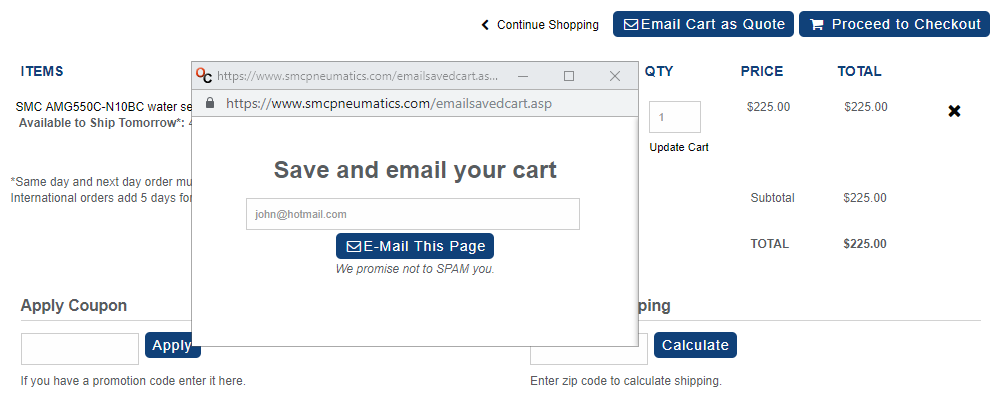
An overwhelming majority of all online shopping carts do not reach the end of the checkout process. This is more than just a nagging feeling that owners of online stores may get, and it is certainly not a rare occurrence.
According to eCommerce market statistics, an average of 74% of all shopping carts are abandoned. This means that for every customer who makes a purchase on your website, approximately three consider it seriously enough to place your products on their list, then ultimately decide against it.
Each abandoned shopping cart may represent a lost chance at making a sale. However, that does not always have to be the case.
This is where a few special features come into play: a persistent shopping cart, the ability to saved carts to a customer's account, abandoned carts notifications and similar can easily improve your website's conversion rate.
In this article we'll go over how letting buyers save their cart for later can reduce cart abandonment.
What is a Website Shopping Cart?
A website shopping cart refers to the module of your website which functionally resembles a physical shopping cart. Where your shoppers can choose the products they want to buy from your online store and by clicking "Add to Cart" these are added to a list, much like grabbing items from a shelf and placing them in a basket.
Then having the option to purchase and order them through the checkout process. A website shopping cart also offers the options to add or remove items from the cart, adjust the quantities and preview the total before proceeding to checkout.
When you add an item to your website shopping cart, it typically displays a few details:
- The products. This often includes the name and a product image, for easy identification among any other items in the cart.
- The quantity being ordered. Most shopping cart software will allow you to increase or decrease how many of each item you want to purchase and receive.
- The subtotal. This dollar amount depends on the price of the item by itself, multiplied by the quantity of the item currently in the cart.
- The total. This is the final price of the order, after accounting for discounts, deals, shipping costs, and any additional fees.
Why Do People Abandon Shopping Carts?
There may be many reasons for why prospective customers turn back before submitting an order.

Some of them may reflect genuine issues with how your website presents and handles the checkout process. Your visitors may be unpleasantly surprised by high shipping rates, or put off by requests for personal information that they find excessive.
The checkout process itself may be structured so confusingly that people have trouble reaching the end and simply give up. These and other potential impediments are worth analyzing.
Other reasons may be more mundane. Sometimes, people get distracted by one thing or another — not an uncommon occurrence on the internet, especially for mobile users — and they simply forget to finish their order.
Other times, they decide to put off finishing their order until a later point in time, perhaps when their next paycheck comes. By the time that point in time comes and goes, their intent to purchase may be long gone from their minds. The abandonment of shopping carts are not always the result of issues that people have with your site. It may not even be a conscious decision.
You should dedicate efforts to optimizing your checkout process in order to take care of all the reasons that compel people to actively decide against purchasing the items on their cart.
Let's discuss how the use of a persistent shopping cart and the ability to save carts on your store can help customers in ways that reduce the shopping cart abandonment rate.
What is a Persistent Shopping Cart?
To understand how a persistent shopping cart works, we need to define website “cookies”. These are small HTTP files that a website can automatically store on the computers of their visitors. Although a variety of industries use this practice, cookies were first developed by the create of the Netscape browser as a way to keep tracking of people that previously visited a website.
A persistent shopping cart takes advantage of the use of cookies to maintain the products added to the cart when a visitor returns to your website after their initial visit.
When someone visits your online store, the shopping cart software used by your website will save an encrypted cookie into the visitor's computer. As they add items to their cart, that data is saved to their session and the cookie maintains a reference to this session. This allows your visitor to exit the website and still have that filled shopping cart waiting for them — as long as they return to the website using the same browser and before the cookie expires, which can be set to expire in minutes or in months.

This feature is especially helpful for customers who unintentionally abandon their carts. For example, imagine a situation in which someone spends an hour browsing your inventory, finds ten different items that grab their attention, and places all of them in their cart. Along the way, they make one false move with their cursor and accidentally close out the tab or window.
Without a persistent shopping cart, that order is lost forever. The user may not even remember some of the items they impulsively added to their list, and the prospect of combing through your product pages a second time may not be appealing. All that time they spent will be for nothing: they will not get any of the items that intrigued them, and you will not see any profits from them.
While not all ecommerce platforms offer a persistent shopping cart, if you do have this functionality, shoppers can swiftly return to your website and find their shopping cart exactly as it was before their unexpected exit.
Let your visitors pick up right where they left off, without any of the extra hassle they would have faced had the cart been lost. Integrating a persistent shopping cart with your website can do more than decrease cart abandonment and increase sales. It can serve as another way of proving to visitors that your business cares about creating a convenient online shopping experience.
Saving a Cart for Later to a Customer's Account
There are other reasons for why potential customers may leave their carts that do not fall into either side of that binary. Sometimes, users add products to their carts and leave them on purpose with the intent to return to them later.

Giving them the choice to save their cart and come back later can make it more convenient for them to shop on your website.
The ability to save carts for later is similar to the persistent shopping cart in its purpose of keeping a customer’s shopping cart available even if they leave your website. While a persistent shopping cart just keeps the current session alive for the life of the cookie, the saved carts feature allows them to save it manually when needed to their customer's account for future access.
Basically, your store will be offering a great benefit to shoppers by allowing them to save carts for later, while at the same time you get them to create an account with your website.

A visitor that goes through the process of creating an account and saving cart, is trusting your website with their contact information and is committed to returning in the future to complete their order.
More and more people are using their smartphones for their shopping, rather than a computer. Many also like to start their shopping on one device and finish it on another.
By offering the ability to save carts for later, your customers can save their carts onto their accounts and then access them from any device or browser. This greatly decreases the amount of time and effort that your customers need to fill an order.
The saved carts feature is one way that you can let your visitors customize their shopping experience to their benefit — which is, if they make a purchase, ultimately to your benefit as well.
Abandoned Cart Email Notifications
Simply saving someone’s shopping cart for them is not always enough. Sometimes, people really do forget about their cart after putting off on completing their order.
And in occasions, they go through checkout and believe that they finished paying for the order without actually completing it. This is even worse because at least people who forget about their cart may remember it later on. If someone abandons their cart under the assumption that they completed their order, they may not think to double-check. When their requested items fail to turn up, the user may then grow angry with your business.
You can prevent these issues by emailing your customers whenever they abandon their cart. Setting up automated abandoned carts notification is possible thanks to ecommerce automation.
An email message can automatically be sent to shoppers who created a shopping cart but have yet to finish it. These can prove quite effective in reminding users about forgotten carts. They can also serve as warnings to anyone who thought they had finished the checkout process that they are still missing something.
Take this one step further by including the actual content of the cart in the emails as a reminder, and if possible a promotion to give them an additional push to complete their order.
Summary
All these great ecommerce features — a persistent shopping cart, the ability to save carts, abandoned carts notifications and similar cart abandonment apps — approach the issue at hand from different angles. Each can help bring down the abandonment rate on its own, but businesses that use some or all of them together could see even greater drops.
Moreover, the use of more than one cart-saving feature may be necessary because different internet users respond to different methods of communication. When they have more options, they get a greater degree of control over their shopping experience, and they can customize it to suit their individual styles.
In this way, letting buyers save their cart for later can do more than reduce cart abandonment rates. Providing multiple means for saving carts can also increase your customers’ satisfaction and, as a result, their loyalty.





Leave a reply or comment below